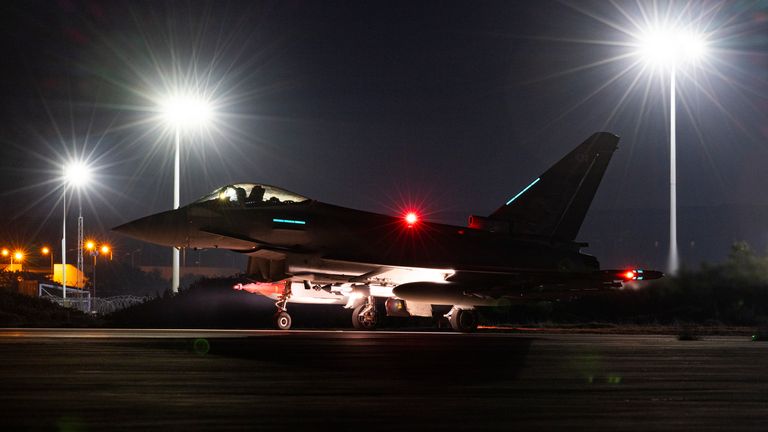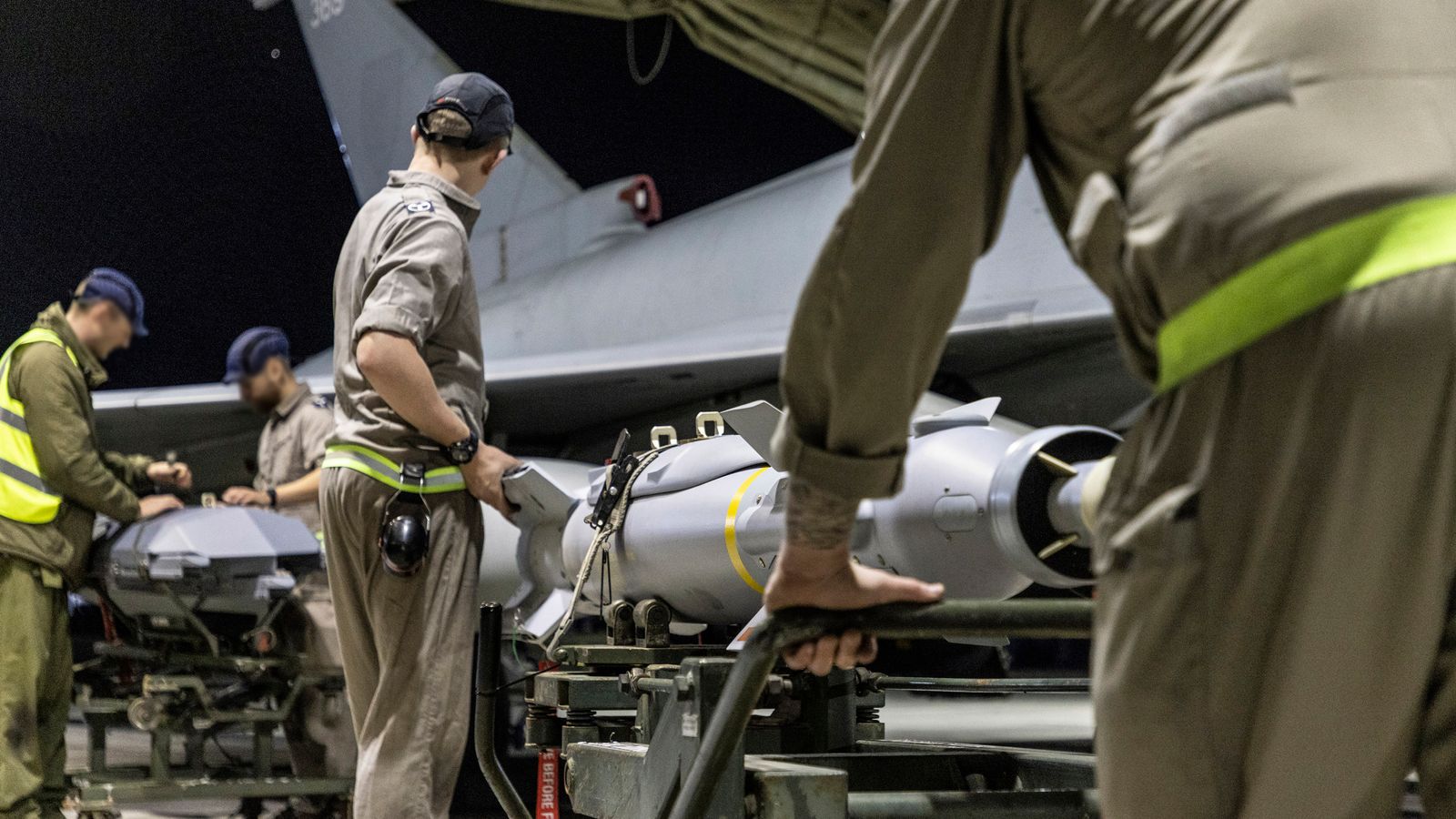
The US and Britain have struck more than a dozen Houthi targets in Yemen after a surge in attacks by the Iran-backed militia group on ships in the Red Sea and Gulf of Aden.
It is the fourth joint action taken by the UK and the US in an attempt to deter attacks by the group on vessels, including a missile strike this week that set fire to a cargo ship.
According to US officials, American and British fighter jets hit about 18 sites across multiple locations, targeting missiles, launchers, rockets, drones and unmanned surface and underwater vehicles.
The US fighter jets launched from the USS Dwight D Eisenhower aircraft carrier, which is in the Red Sea.
US President Joe Biden ordered the strikes after being briefed on the targets on Friday.
Mr Biden has repeatedly warned that the US will not tolerate the Houthi attacks against commercial shipping.
But the counter-attacks have not appeared to diminish the Houthis’ campaign against shipping in the region, which the militants say is over Israel’s war against Hamas in Gaza.
l Masirah TV, the main television news outlet run by Yemen’s Iran-aligned Houthi movement, said on Saturday that US and UK forces carried out a total of nine airstrikes in the capital Sanaa.
The Ministry of Defence (MoD) has said the UK strikes were carried out by four Royal Air Force Typhoon FGR4s supported by two Voyager tankers.
The MoD saidt: “Intelligence analysis had successfully identified several very long-range drones, used by the Houthis for both reconnaissance and attack missions, at a former surface-to-air missile battery site several miles north-east of Sanaa.
“Our aircraft used Paveway IV precision guided bombs against the drones and their launchers.”
The MoD said previous RAF strikes, on 11 January and 3 February, had destroyed a “number of buildings used to support” the Houthis’ “done and cruise missile operations”.
British Defence Secretary Grant Shapps posted on X after the strikes took place: “It is our duty to protect lives at sea and preserve freedom of navigation.
“That is why the Royal Air Force engaged in a fourth wave of precision strikes against Houthi military targets in Yemen.
“We acted alongside our allies to further degrade Houthi drones and launchers used to mount their dangerous attacks. I thank the brave British personnel involved for their service.”
Read more:
‘Catastrophic’ attack on British ship leaves it at risk of sinking
Yemeni social media influencers dance on hijacked cargo ship
US Secretary of Defence Lloyd J Austin said the US and UK were supported by Australia, Bahrain, Canada, Denmark, the Netherlands and New Zealand in carrying out the strikes.
He said eight locations were targeted, including Houthi underground weapons storage facilities, missile storage facilities, one-way attack unmanned aerial systems and air defence systems.
The US has been carrying out almost daily strikes without British support to take out Houthi targets, including incoming missiles and drones aimed at ships, as well as weapons that were prepared to launch.
The Houthis have launched at least 57 attacks on commercial and military ships in the Red Sea and Gulf of Aden since 19 November, and the pace has picked up in recent days.
“We’ve certainly seen in the past 48, 72 hours an increase in attacks from the Houthis,” Pentagon spokeswoman Sabrina Singh said in a briefing on Thursday. And she acknowledged that the Houthis have not been deterred.
“We never said we’ve wiped off the map all of their capabilities,” she told reporters.
“We know that the Houthis maintain a large arsenal. They are very capable. They have sophisticated weapons, and that’s because they continue to get them from Iran.”














